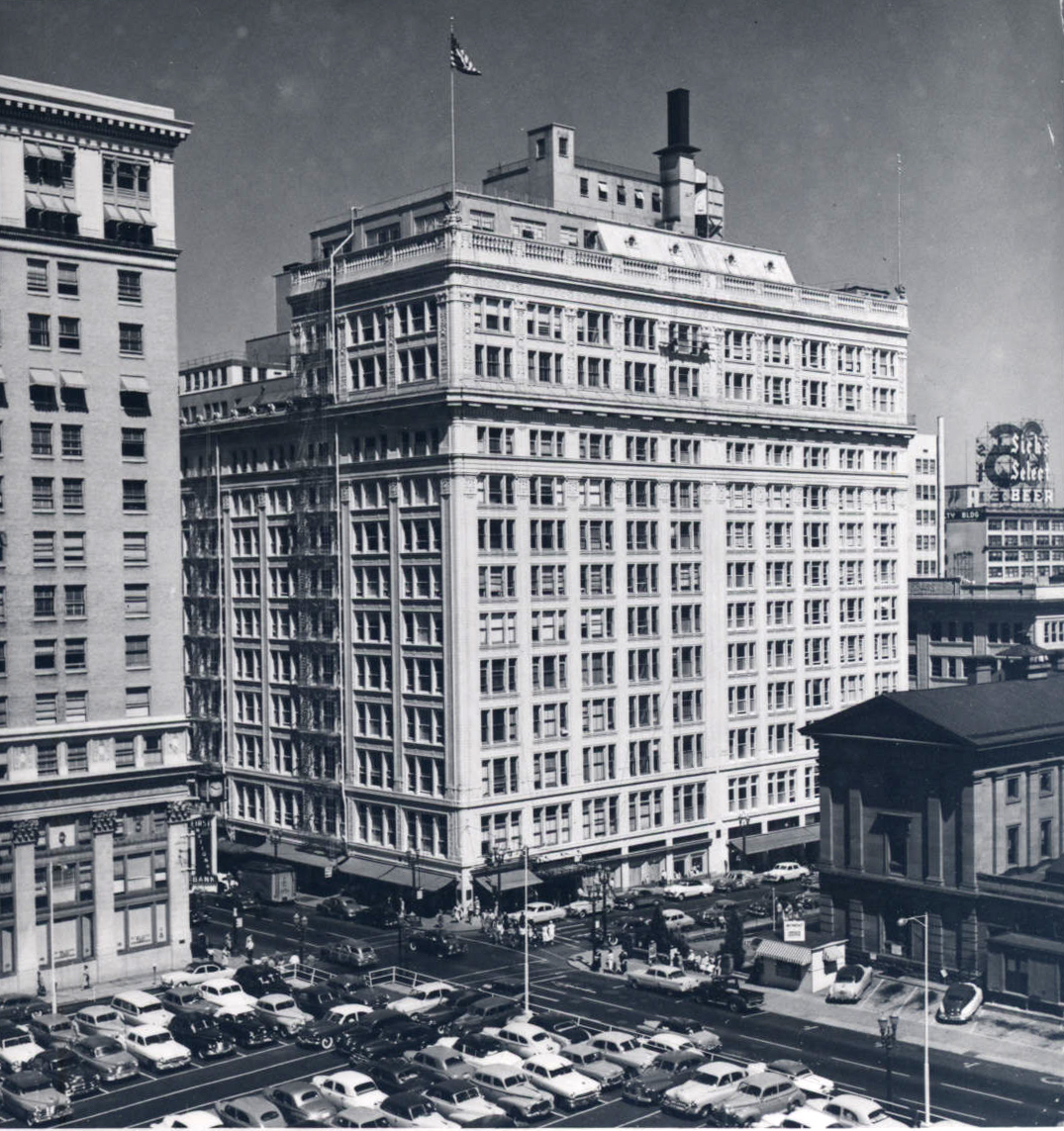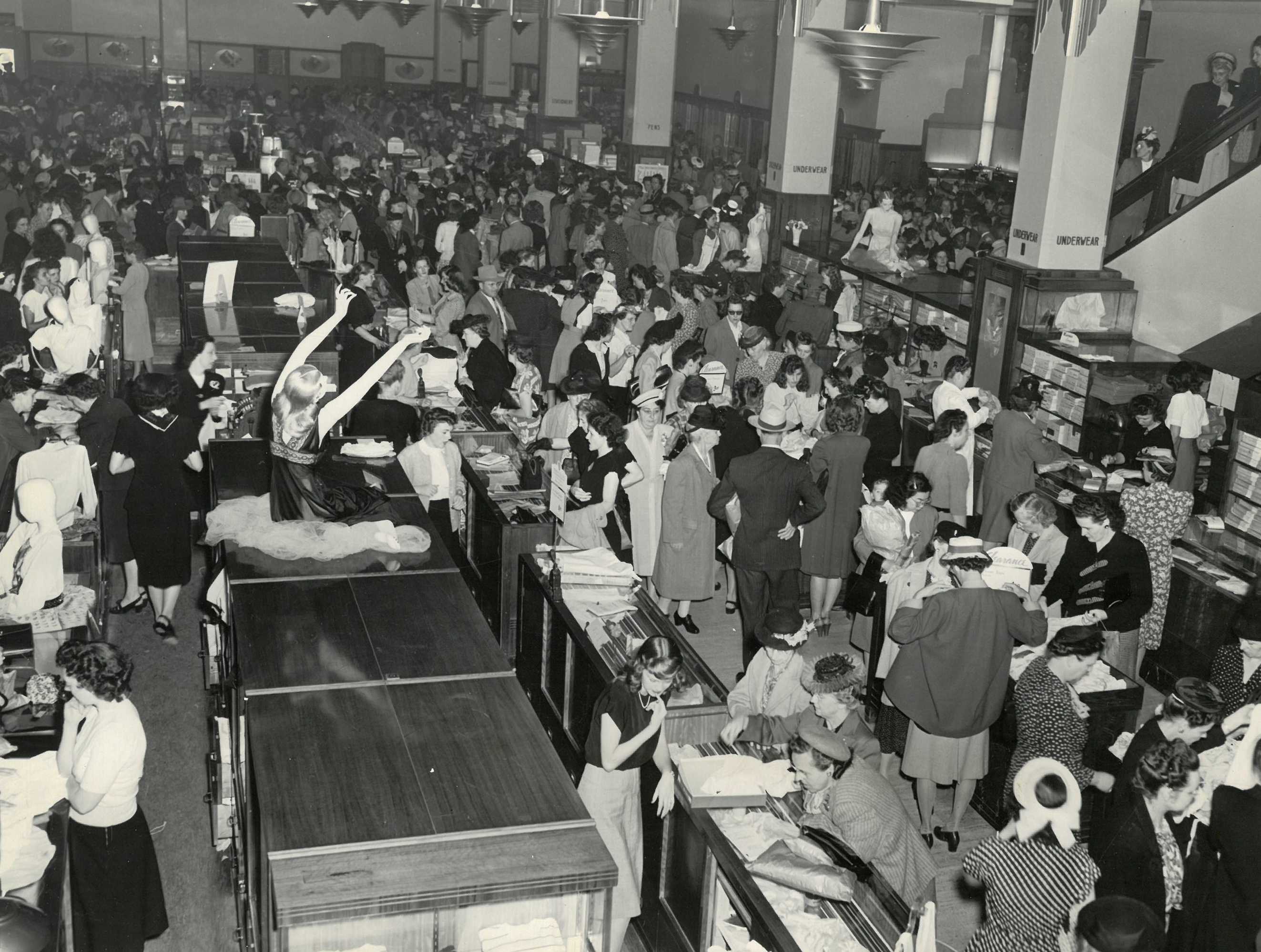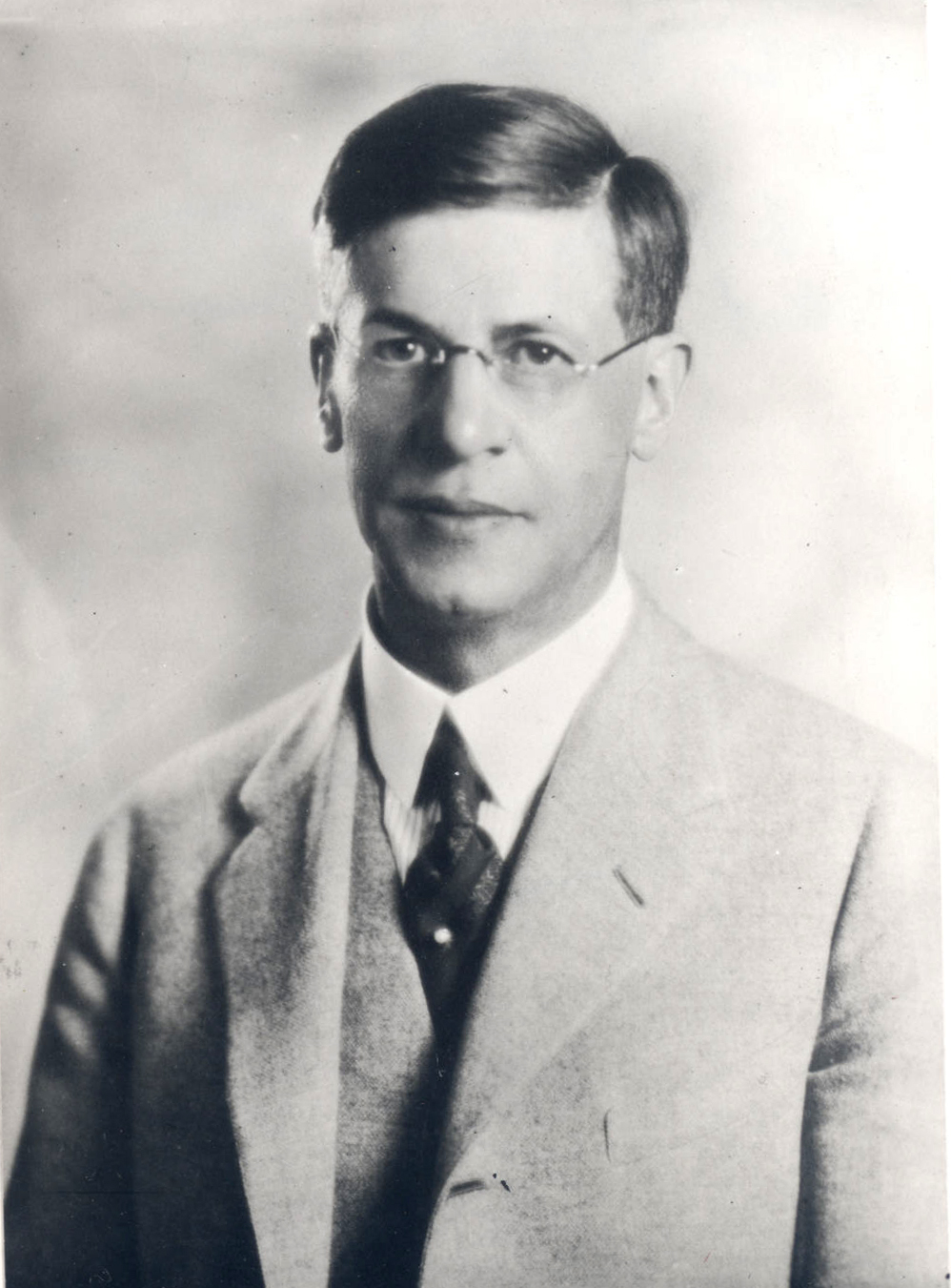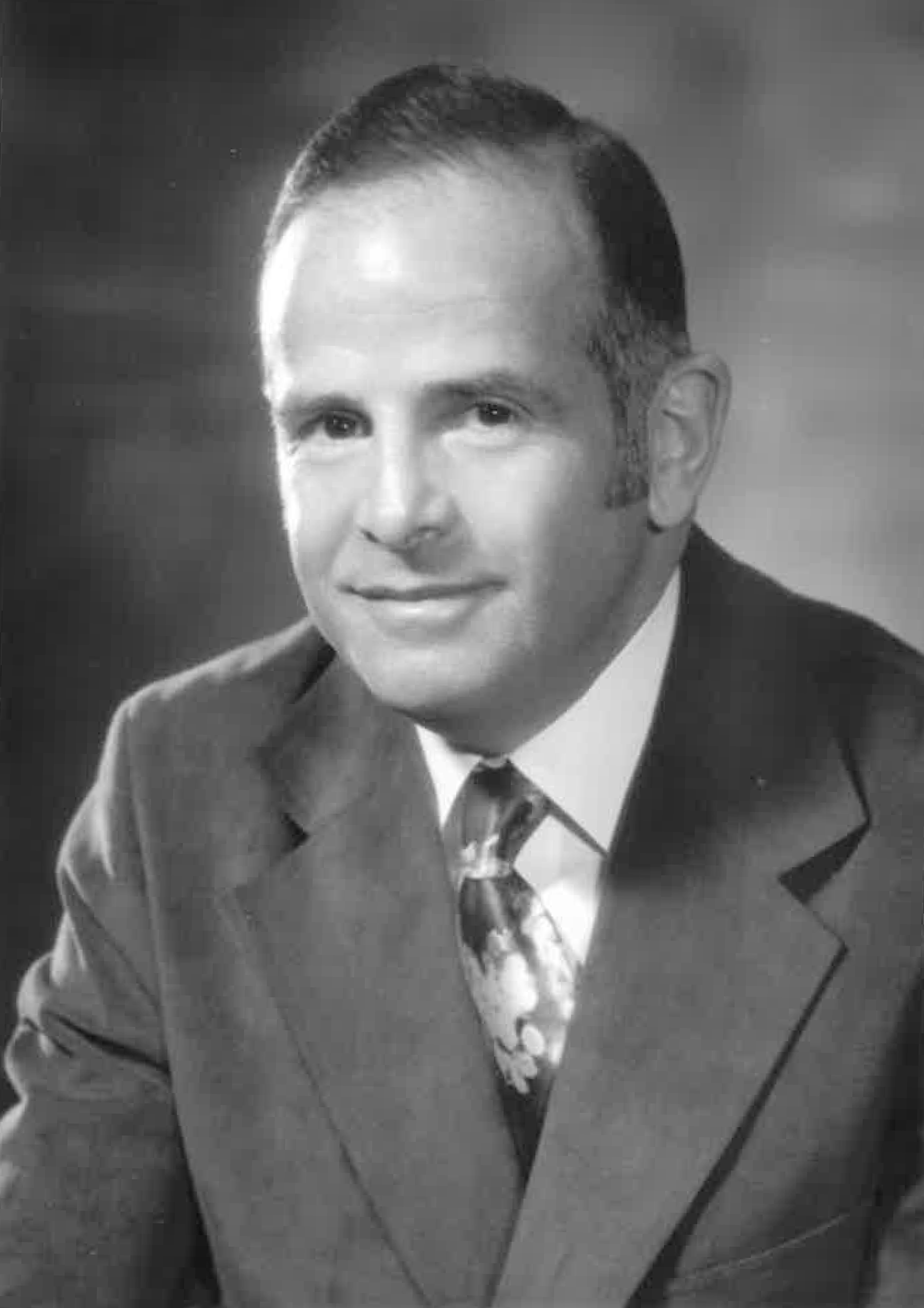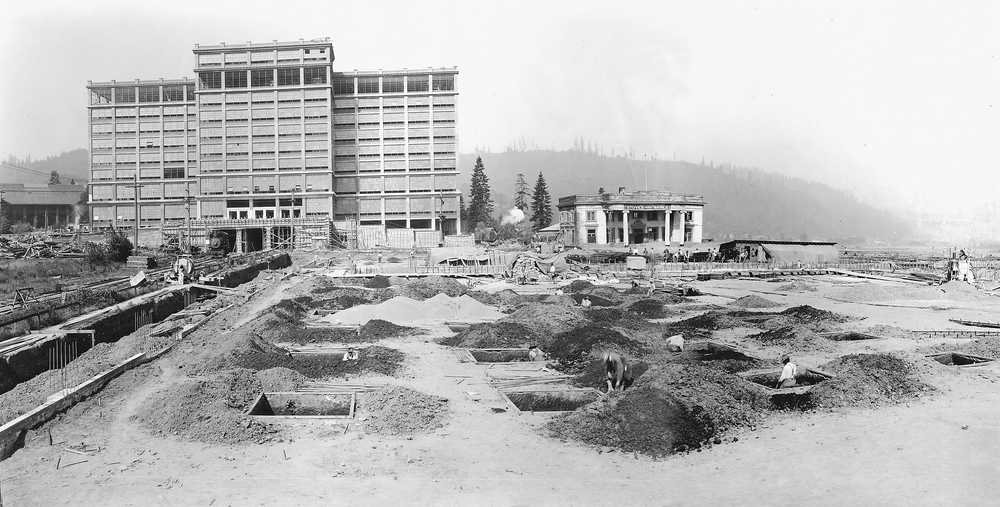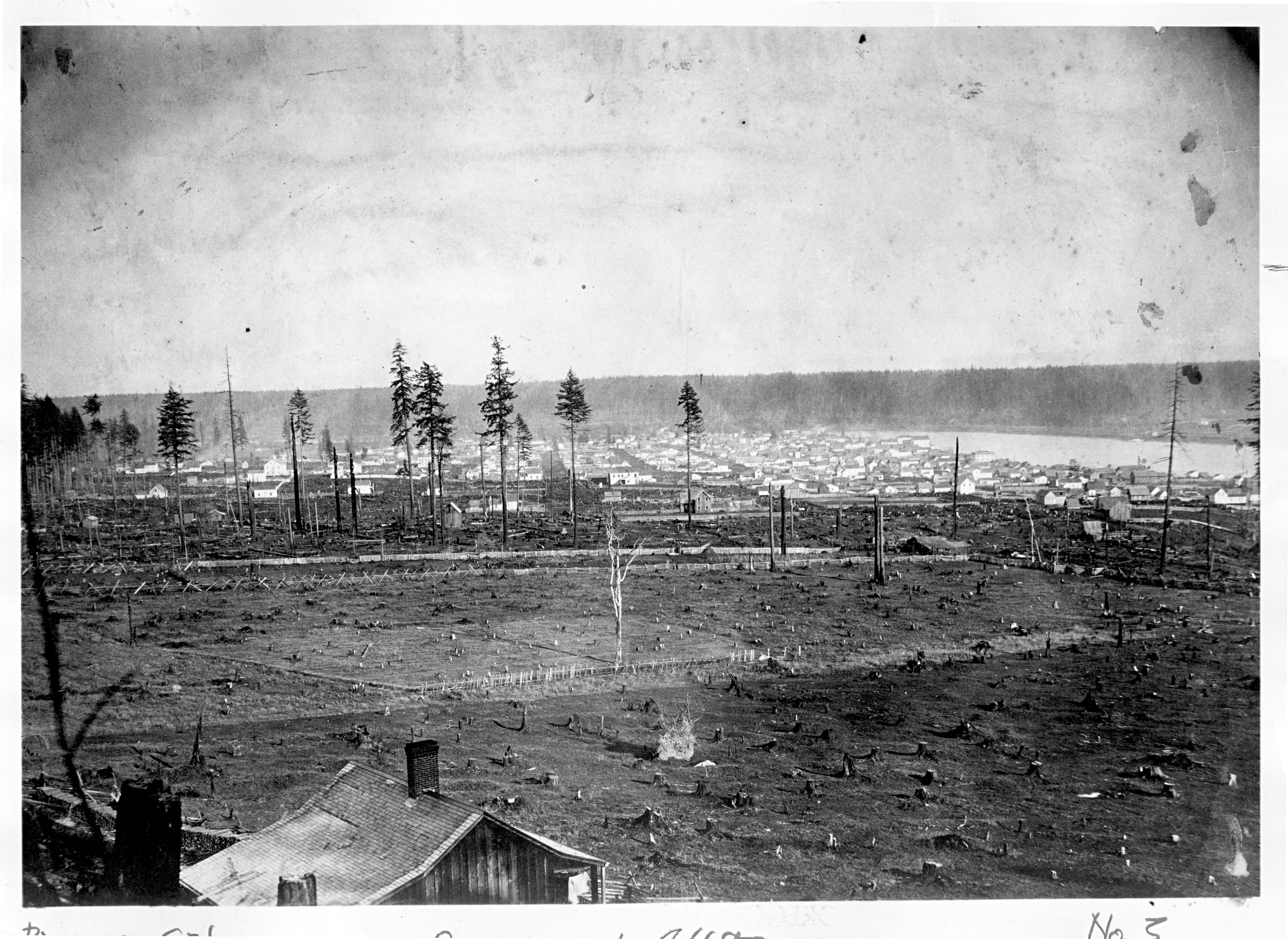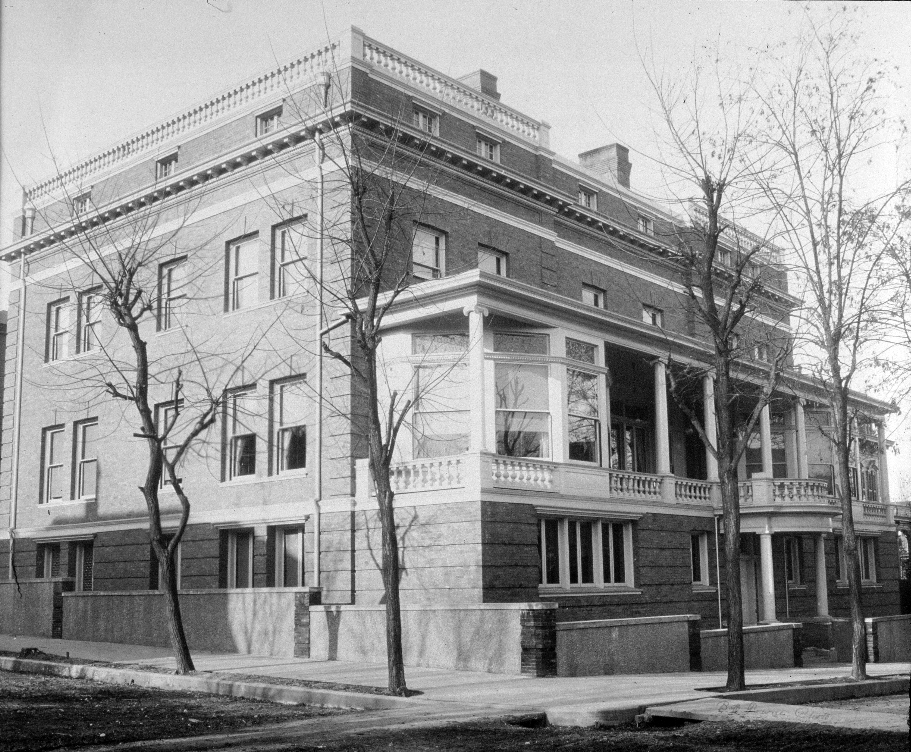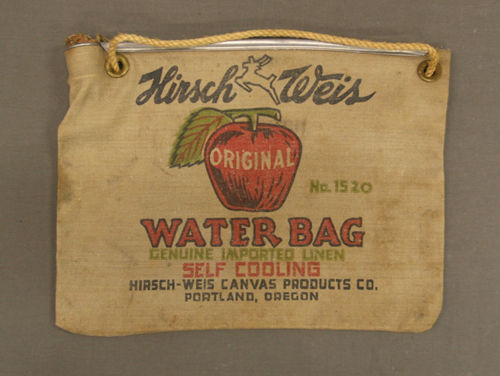Meier & Frank, which advertised itself as “One of America’s Great Stores,” was an economic, cultural, and civic institution in Portland for more than a century. From its beginning as a small general store in downtown Portland in 1857, Meier & Frank grew into one of the most successful department stores chains in the United States.
The First Generation
Portland had a population of about 1,300 in 1857 when Aaron Meier (1831–1889), a twenty-six-year-old Jewish immigrant from Ellerstadt, Bavaria, arrived in the city. He had worked in his brothers’ dry goods store in Downieville, California, during the Gold Rush and peddled goods in Oregon, where he took out a land claim near Wilsonville. In 1857, with partners Nathan Meerholz and David Simon, Meier established a wholesale and retail general store at 137 Front Street in Portland, one of forty-two general stores in the city. In 1863, Meier traveled to Bavaria to settle a family estate and to marry his childhood sweetheart, Jeannette Hirsch (1843–1925). By the time he returned to Portland, his store, which had been left under Meerholz’s care, was bankrupt.
Meier soon opened a larger store on Front Street and invited two Jewish brothers from Germany, Emil (1845–1898) and Sigmund Frank (1850–1910), to work for him. When Emil Frank became a partner in 1873, the store was renamed Meier & Frank. The same year, the Great Fire of 1873 destroyed twenty-two blocks of downtown Portland, including the store. Meier and Emil rebuilt on the other side of Front Street, where Meier & Frank would eventually span the length of the block.
Sigmund Frank, married the Meiers's daughter Fannie (1866–1930) on December 8, 1885. Emil Frank left the business three years later to cofound the Blumauer–Frank Drug Company, and he sold his interest in Meier & Frank to Aaron Meier and Sigmund. The store prospered, even during the Willamette River Flood in 1894, when the family built walkways and false counters above flood level and used rowboats to give customers access to the store.
After Aaron Meier died on August 16, 1889, Sigmund Frank became company president, and Jeannette Hirsch Meier brought her family from Bavaria to expand the business. Sigmund incorporated the company and distributed shares of stock to family members, including the Hirsch family. (Max and Leopold Hirsch would later help found White Stag, a sporting goods manufacturer.) In 1889, Meier & Frank moved into a two-story, quarter-block annex on the corner of Second and Taylor Streets.
When a depression hit the country in 1893, four banks closed in Portland in late July. First National Bank was on the precipice, and on July 28, 1893, Sigmund and his young cousin Max Hirsch “secretly wheeled bags of gold coin from the Meier and Frank Company safe, through the back door of the bank,” E. Kimbark MacColl wrote in Merchants, Money, and Power. “The following morning, a smiling Henry W. Corbett [the bank’s executive] redeemed deposits and assured the fretful that there was no need to worry; all deposits were safe.”
Period of Expansion
In 1897, Sigmund Frank purchased land on Fifth Avenue between Alder and Morrison Streets, investing over $500,000 in the site. Designed by Whidden & Lewis, the building had 120,000 square feet of floor space. By 1932, the store had expanded to fill the entire block with a building based on a design by A.E. Doyle; it was the architect’s first major commission.
As Portland grew, so did Meier & Frank. By 1907, it was one of four locally owned Oregon companies worth more than a million dollars (the others were Benson Logging and Lumber, Portland Flouring, and Henry Weinhard Brewers). Sigmund Frank died in 1910 and was succeeded by Abraham Meier (1868–1930); Abe’s younger brother Julius became vice president and general manager. In 1915, the store had eleven acres of selling-floor space, making it the fourth-largest department store in the country.
The company started radio station KFEC, which began broadcasting on October 19, 1922. The station broadcast music, syndicated shows, and local football games until it went off the air on March 20, 1929. In 1932, the Meier & Frank Building had taken over the block, with over a hundred departments, and was a mainstay in Portland. For decades, a large clock on the first floor served as a rendezvous point where people arranged to “meet under the clock.”
The company prioritized dominance in the market over maximizing profits, shaping its approach to merchandising and customer service accordingly. The store advertised in the two daily newspapers from the late-1800s on. Meier & Frank would literally go the extra mile for customers. In the early years, the store delivered goods by horse-drawn wagons––and later a fleet of gas-powered green trucks and vans––that would deliver anything from the store to anyone in the city. A Delivery Depot and a Retail Reserve warehouse building were later built in Northwest Portland. The March 31, 1957, Oregonian reported that each year 63 vehicles covered 4,000 square miles delivering more than 1,700,000 packages.
Jeannette Meier died in 1925. She had been a controlling force behind the store since her husband’s death, visiting the store daily, weighing in on decisions, talking to employees, and reigning over family disputes. Her will urged the Meier and Frank families “to remain together and harmoniously carry on.”
Abraham Meier died in 1930, and his brother Julius (1874–1937) became president of Meier & Frank. Later that year, Julius was elected governor of Oregon, and Aaron Meier Frank (1891–1968), Sigmund and Fannie’s son, became general manager. When Julius Meier died in 1937, Aaron was named president, a position he held until 1964.
During World War II, Aaron Frank’s vision was to “win the war first, sell merchandise second.” Meier & Frank changed its advertising (1,207 full pages in newspapers) to support the purchase of war bonds, the Red Cross, and 133 other war-related causes. The store held the largest single sale of war bonds in the country and was cited by the U.S. Treasury Department as the most outstanding by any department store.
Post World War II
Meier & Frank employed Black workers as maids and janitors, but Black workers did not hold customer service positions until 1946, when the Urban League of Portland launched a campaign to break down employment barriers. The League collaborated with other department stores—including Meier & Frank, Lipman & Wolfe, Olds & King, and Eastern Department Store—to push for change. During the 1940s, after labor union organizers reached out to Meier & Frank workers, Aaron Meier delivered a speech in 1949 asking his “store family” to resist the effort to “divide us.” Employees voted the union down.
Many people began their careers at Meier & Frank, including actor Clark Gable, who sold ties in 1922. Some employees stayed for decades. Women employees, who had sustained the retail labor market during the war, often started in the receiving merchandise department and worked their way up to sales clerks to buyers or the head of a department. Emma Doering was with the company for sixty-four years, starting in ladies hats sales in 1893. As early as 1949, the company had a welfare fund for employees and offered them discounts. The company also sponsored employee choirs, football teams, a women’s softball team called the Alley Cats, and hosted annual picnics and amateur talent shows.
The company expanded to a second store in 1955 in Salem––185,000 square feet of retail space for $8 million. Gerry Frank (1923-2022) became store manager. Five years later, the Lloyd Center, America’s largest indoor shopping mall, opened with Meier & Frank as an anchor tenant, and the company opened a tire center in Portland at Northwest Broadway and Flanders Street.
In 1957, Meier & Frank employed more than 4,000 people. That year, the company added Circus Land (later Toyland) to the tenth floor of the Portland building; Santa’s Headquarters was built on the seventh floor. “Santaland” became an annual tradition at Meier & Frank, and included free rides on the Skyliner Monorail, a Meier & Frank Holiday Parade, and staged Christmas scenes in the street-facing windows.
Selling the Company
By 1964, Meier & Frank had annual gross revenues of $52 million, making it the second-largest single-location department store by sales volume on the West Coast (Bullock’s in Los Angeles was the largest). At the same time, the family was divided over a proposed sale of the company. The Oregon media covered the dispute almost daily, and the New York Times ran a story headlined “Dissension Tears Meier & Frank.” In the end, Aaron Frank and his son Gerry left the board of directors, and Meier & Frank Co. was sold to St. Louis-based May Company, which owned Macy’s Department Stores.
In 1966, Julius L. "Jack" Meier, Jr. (1912–1988), Julius’s son, was named chair of the board, a position he held until 1972. Over the next three decades, Meier & Frank opened stores in Eugene’s Valley River Shopping Mall (1969), Washington Square in southwest Portland (1973), Vancouver Mall in Vancouver, Washington (1977), Clackamas Town Center in Happy Valley (1980), and Rogue Valley Mall in Medford (1986). The last Meier & Frank store was opened in Hillsboro’s Streets of Tanasbourne in 2004.
Federated Department Stores bought the Meier & Frank company in 2005; the stores were rebranded as Macy’s in 2006. Meier & Frank’s downtown Portland store was closed in 2016 and the Lloyd Center store in 2020. The downtown Meier & Frank Building was transformed into a mixed-use space. The Meier & Frank Building, delivery depot, and warehouse are on the National Register of Historic Places, and many artifacts from the company are in the collections of the Oregon Historical Society.
-
![]()
Meier & Frank building, 1952.
Courtesy Oreg. Hist. Soc. Research Library, 005930
-
![]()
Friday Surprise shoppers, September 5, 1947.
Oregon Historical Society Research Library, Meier & Frank Store photograph collection, 1885-1960, Org. Lot 695, box 1, folder 7, OrHi 95985
Related Entries
-
![Albert E. Doyle (1877-1928)]()
Albert E. Doyle (1877-1928)
Albert Ernest Doyle was one of Portland’s most successful early twentie…
-
![Gerald Wendel “Gerry” Frank (1923–2022)]()
Gerald Wendel “Gerry” Frank (1923–2022)
In 2000, Governor John Kitzhaber named Gerry W. Frank Oregon’s Premier …
-
![Julius L. Meier (1874-1937)]()
Julius L. Meier (1874-1937)
Julius Meier served as Oregon’s governor from 1931 to 1935 during the d…
-
Montgomery Ward/Park Building
The Montgomery Ward building in northwest Portland was a hallmark of mo…
-
![Portland]()
Portland
Portland, with a 2020 population of 652,503 within its city limits and …
-
![Whidden and Lewis, architects]()
Whidden and Lewis, architects
From 1890 to 1910, the Whidden and Lewis firm dominated architectural d…
-
![White Stag Manufacturing]()
White Stag Manufacturing
The White Stag block is a renovated complex of environmentally friendly…
Related Historical Records
Map This on the Oregon History WayFinder
The Oregon History Wayfinder is an interactive map that identifies significant places, people, and events in Oregon history.
Further Reading
Curran, Christine. "The Georgian Room at Meier & Frank." Oregon Historical Quarterly 107, no.3 (2006): 438-444.
Lowenstein, Steven. The Jews of Oregon, 1850-1950. Jewish Society of Oregon, 1987.
MacColl, E. Kimbark. The Shaping of a City: Business and Politics in Portland, Oregon. 1885-1915. Georgian Press Company, 1976.
MacColl, E. Kimbark and Harry H. Stein. Merchants, Money and Power: The Portland Establishment, 1843-1913. Georgian Press Company, 1988.
McMath, George A. “National Register of Historic Places Inventory—Nomination Form: Meier & Frank Building,” December 30, 1981.
Tess, John M. “National Register of Historic Places Inventory—Nomination Form: Meier & Frank Warehouse,” November 29, 1999.
Tess, John M. “National Register of Historic Places Inventory—Nomination Form: Meier & Frank Delivery Depot,” December 1, 2000.
Whitaker, Jan. The World of Department Stores. Harry N. Abrams, 2011.

